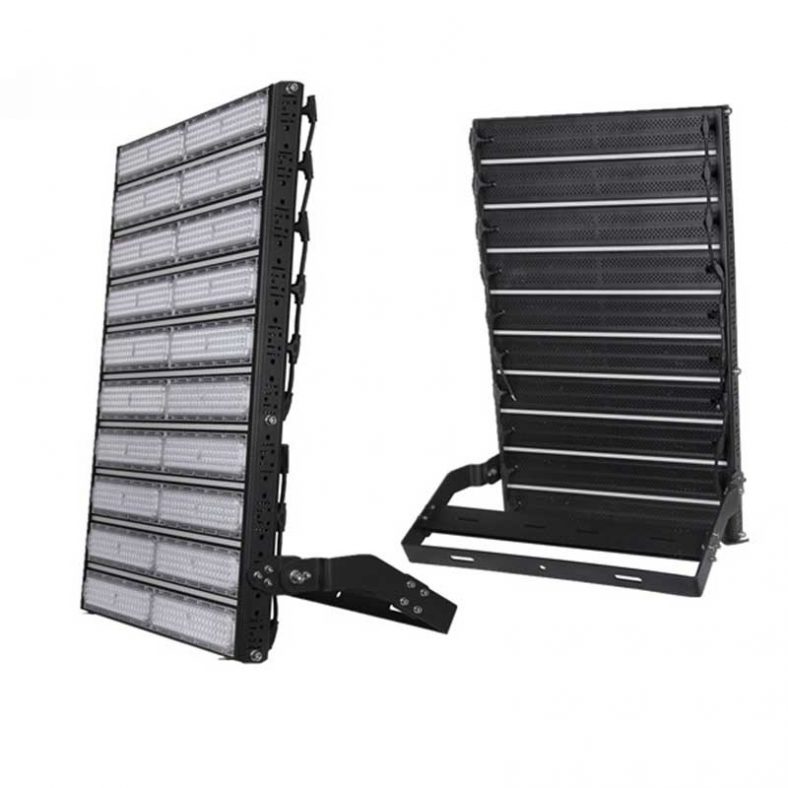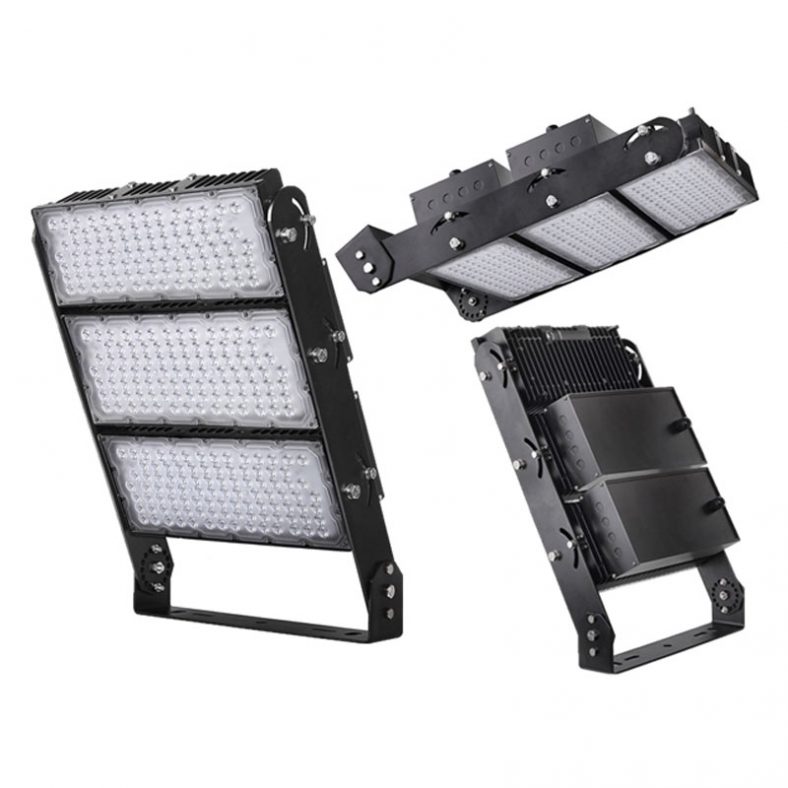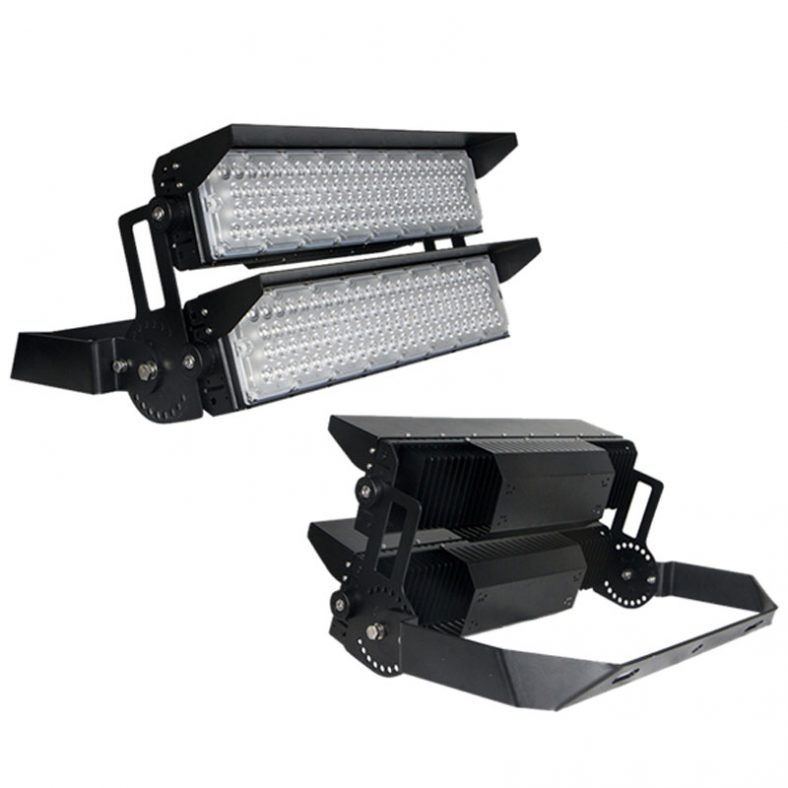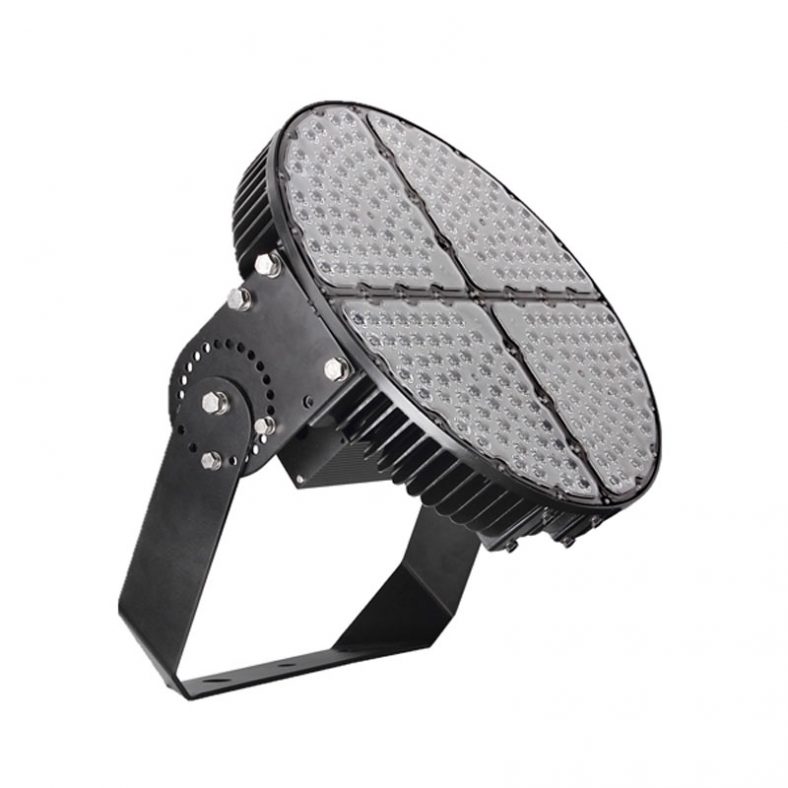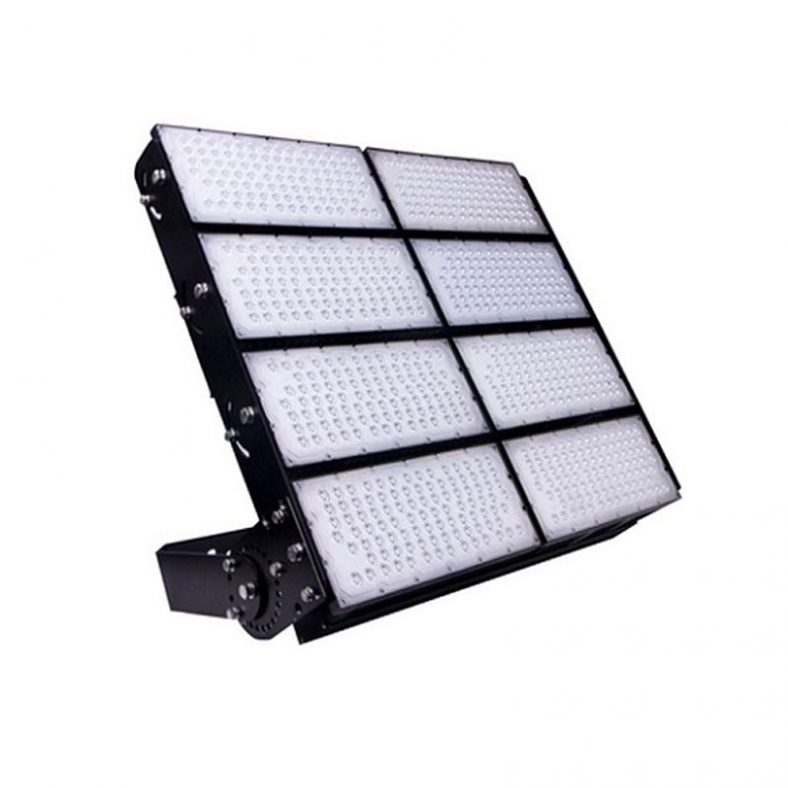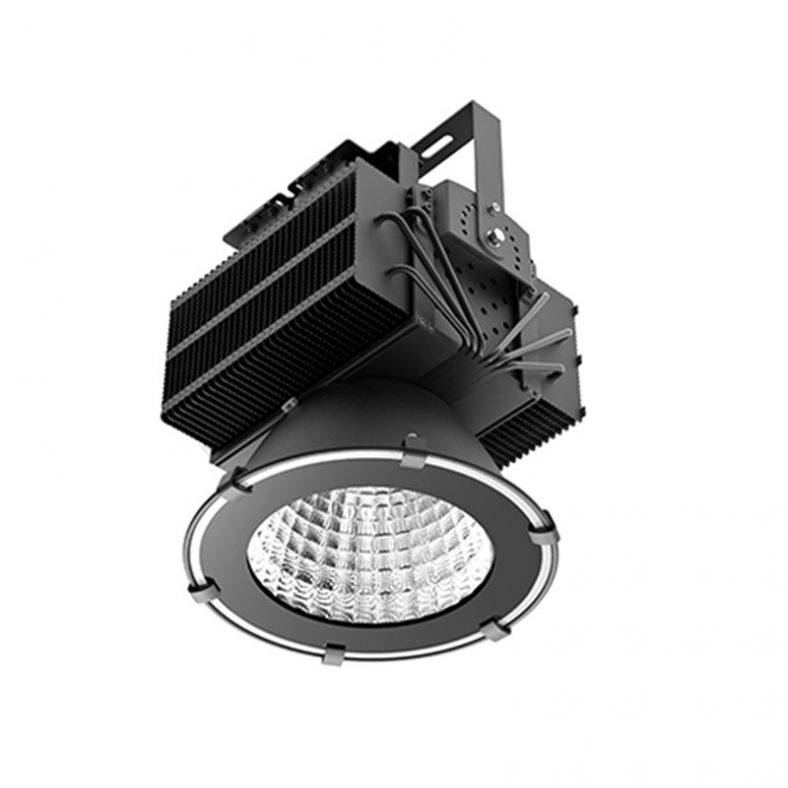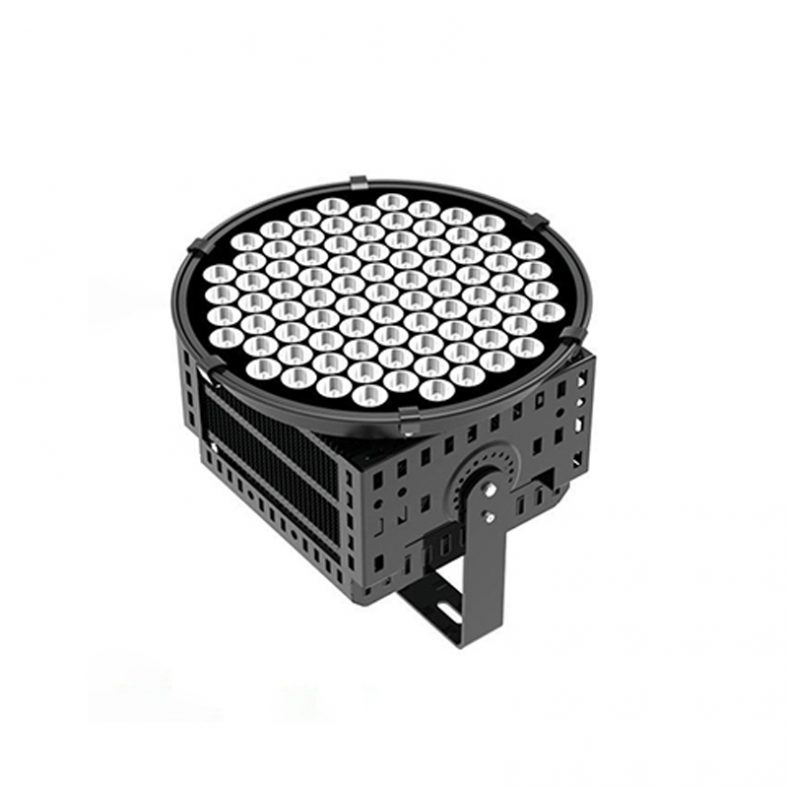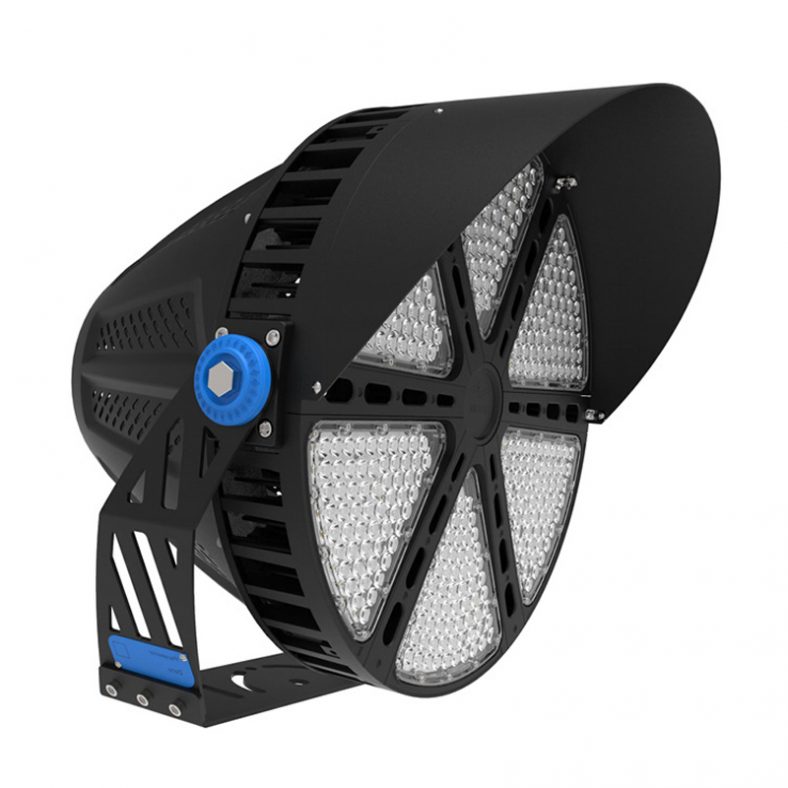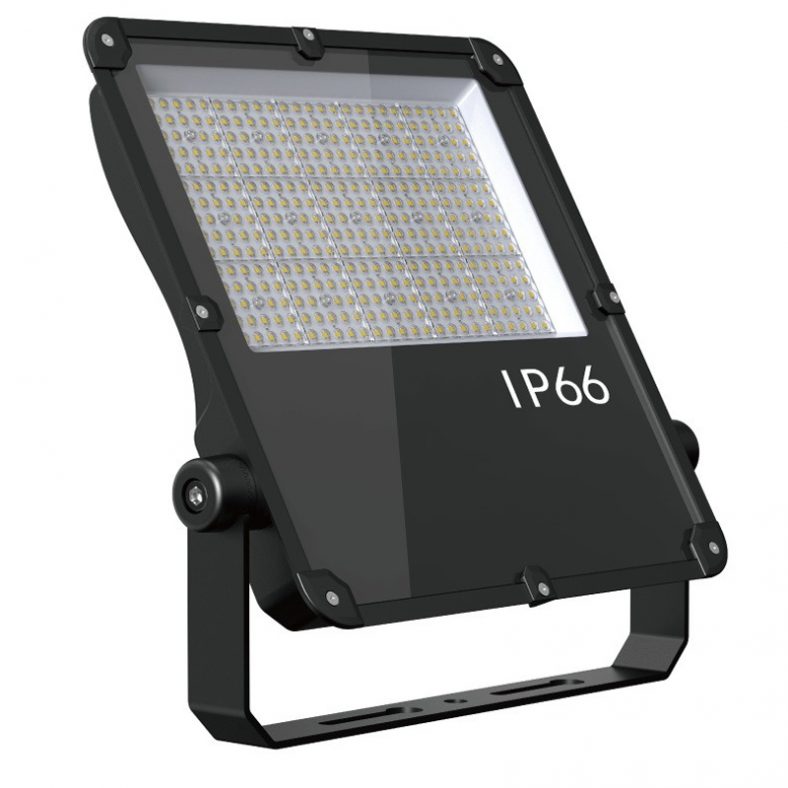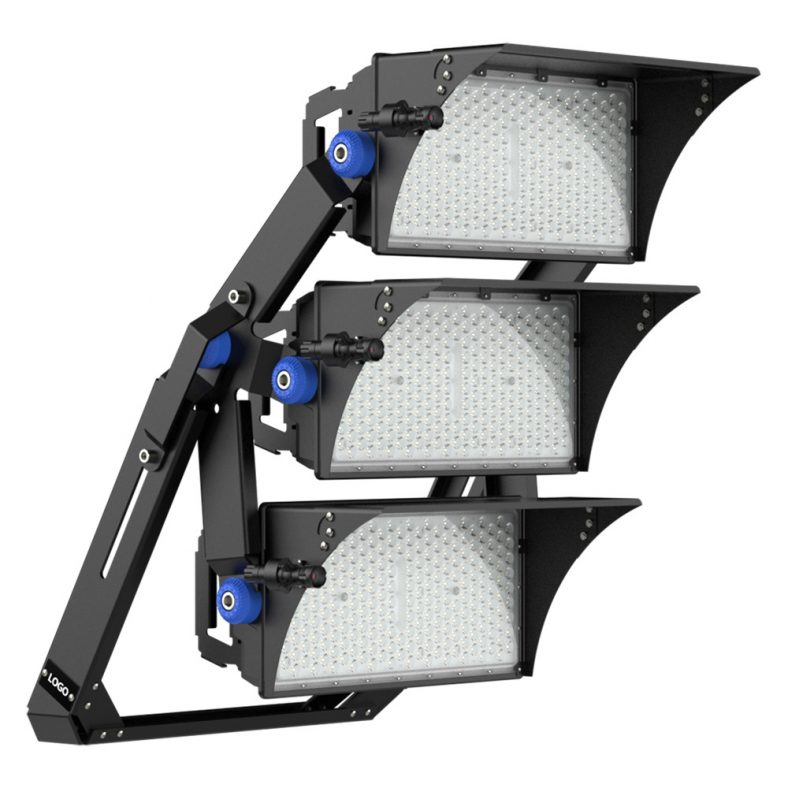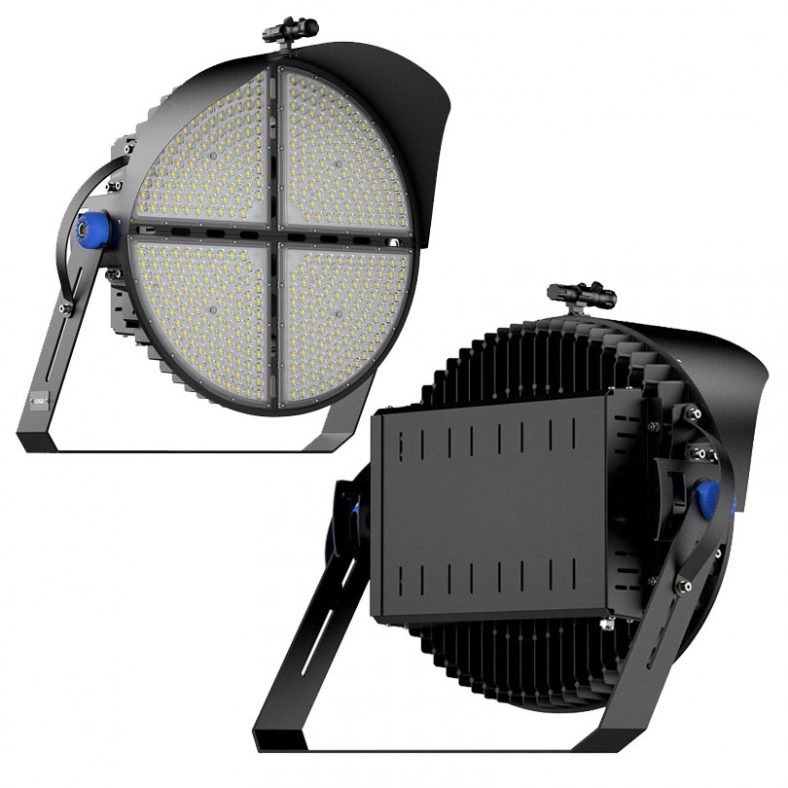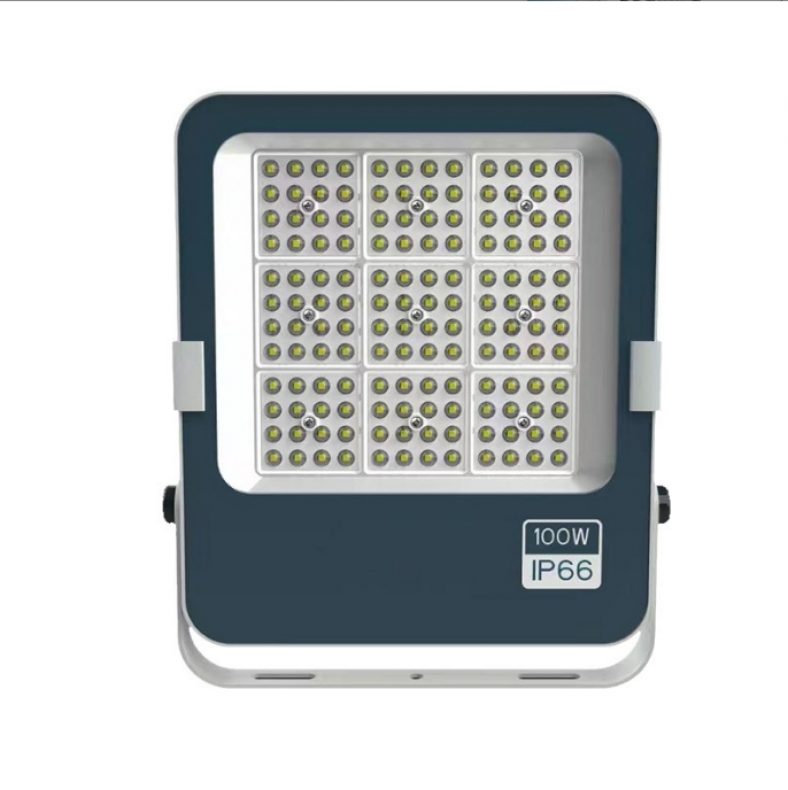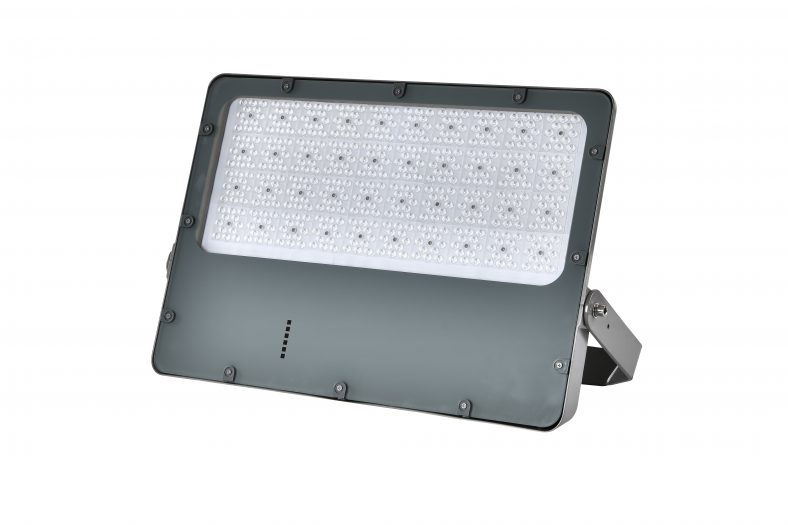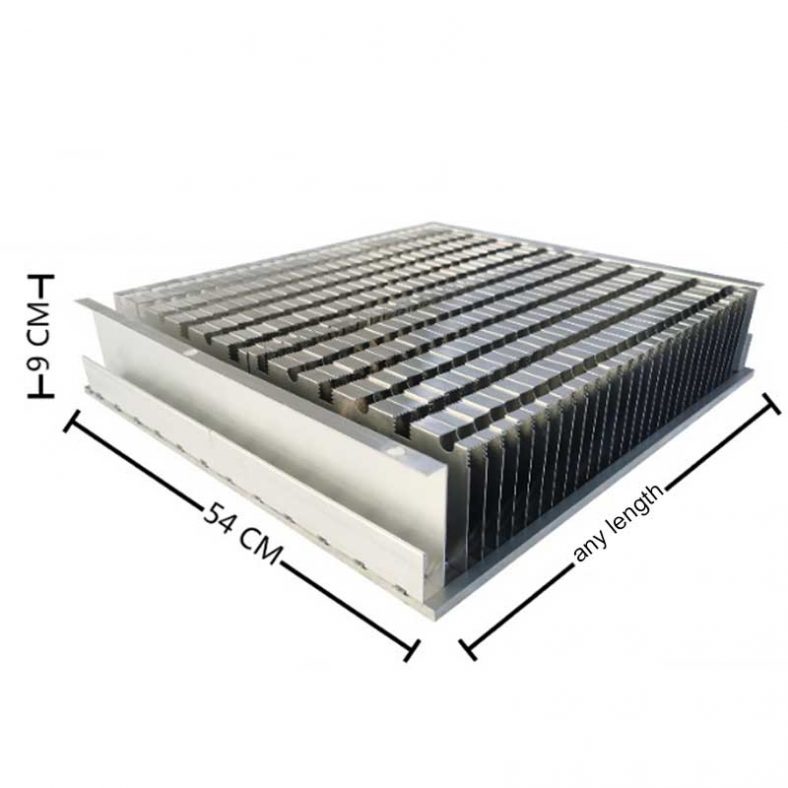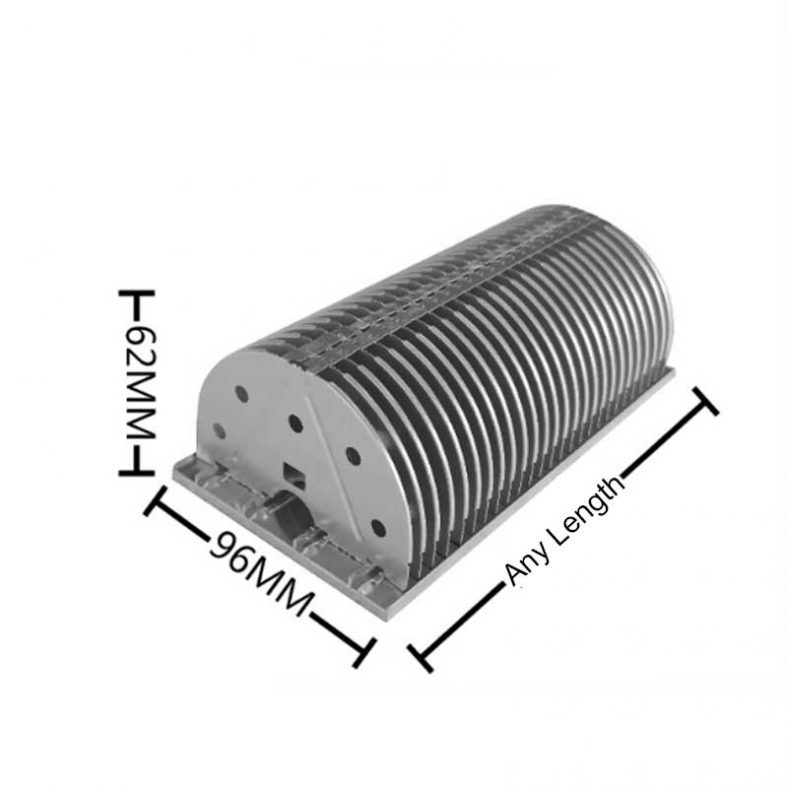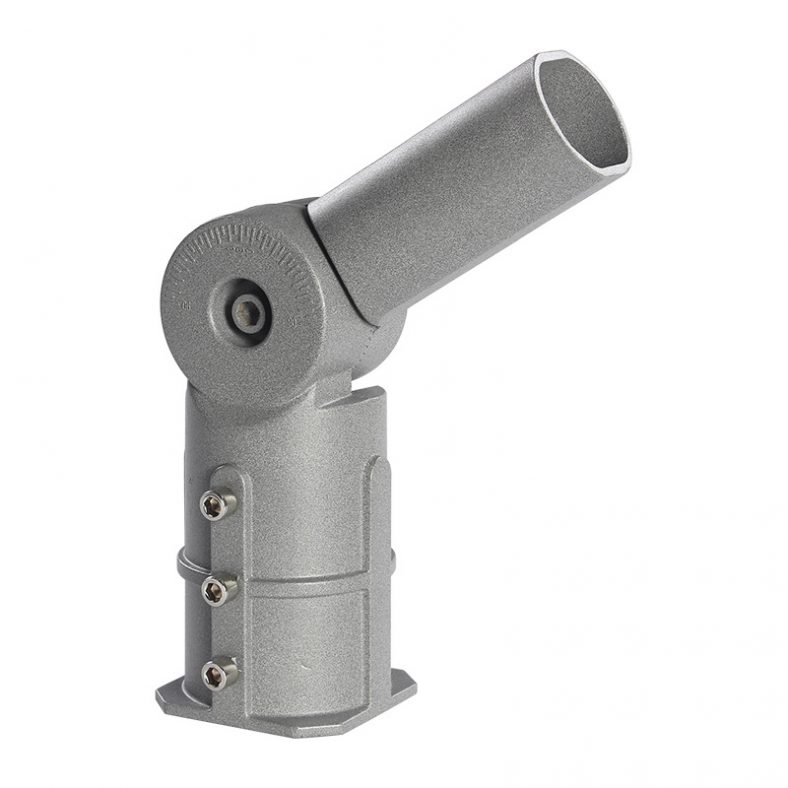
LED Stadium Lights Manufacturer
LED Stadium Lights to meet your every need.
Our LED Stadium Lights solutions are designed to deliver the ultimate performance and efficiency. What makes our solutions unique is the quality of every component, based on our in-depth understanding of what our customers need to achieve.Across all spare parts of LED Stadium Lights, we’ve optimized every element. As a result, our solutions provide dependable, consistent power supply while reducing your operational costs.As one of the top professional LED Stadium Lights manufacturers in China, Wandan lighting supplier also supports customized service, all of the LED Stadium Lights can be customized, such as the power, lumen, logo, package, etc.Contact us to get your LED Stadium Lights solution and affordable price.
LED Stadium Lights
Wandan Lighting specialist offers a wide variety of LED Stadium Lights to meet your every need.
LED stadium lights are a type of lighting system that uses Light Emitting Diodes (LEDs) to illuminate large outdoor areas, such as sports stadiums, arenas, and other outdoor event spaces. They are popular for their high energy efficiency, low maintenance, and long lifespan compared to traditional lighting systems.
LED stadium lights are designed to provide bright and uniform lighting for sports events, concerts, and other outdoor activities. They are available in a range of wattages and beam angles, allowing them to be customized for the specific needs of the space they will be used in.
Some of the benefits of LED stadium lights include:
- Energy Efficiency: LED lights are much more energy efficient than traditional lighting systems, which means that they use less power and can save on energy costs over time.
- Long Lifespan: LED lights have a much longer lifespan than traditional lighting systems, which means that they require less maintenance and replacement over time.
- High-Quality Lighting: LED lights produce bright and uniform lighting that is ideal for outdoor sports and entertainment events.
- Durability: LED lights are designed to withstand harsh outdoor conditions, making them a durable and reliable lighting solution for sports stadiums and other outdoor venues.
Overall, LED stadium lights are an excellent choice for anyone looking to illuminate large outdoor spaces with high-quality, energy-efficient lighting.
Relate LED Stadium Lights
Wandan Lighting specialist offers a wide variety of LED Stadium Lights to meet your every need.
-
300W To 1000W 140lm~150/w LED Stadium Floodlight
-
150lm/w to 180lm/w LED Stadium Light With Optical Grade PMMA Lens
-
250W Per Modular High Power LED Floodlights For Football Field
-
Angle Adjustable 150lm/w To 170lm/w LED Stadium Light
-
150lm/w to 160lm/w 1500W-2000W Modular Stadium Light
-
Wholesale LED Tower Chandelier With Mingwei Power Supply
-
Super Bright Tower Hanging Stadium Lights
-
High brightness 750W 1200W LED spot light
-
SMD 2835 High Lumen Led Flood light 300W
-
IK08 IP66 500W 1000W 1500W 2000W Modular Led Flood Light
-
800W 1000W 1200W Round LED stadium lighting fixtures
-
Stock 400w led flood light 6500k outdoor lighting spotlight
-
100W150W200W360W High power square project LED Spotlight stock
LED Stadium Lights Kits/Parts
Wandan Lighting specialist offers a wide variety of LED Stadium Lights to meet your every need.
LED Stadium Lights Buy guide
Wandan Lighting specialist offers a wide variety of LED Stadium Lights to meet your every need.
A soccer stadium typically uses a combination of different types of lights to illuminate the playing field and surrounding areas during matches and events.
The primary source of light for a soccer stadium is usually high-powered floodlights mounted on tall towers or poles surrounding the field. These floodlights are usually metal halide or LED lamps, which provide bright, uniform lighting that can cover the entire playing area.
In addition to the floodlights, soccer stadiums may also use auxiliary lighting such as spotlights, light panels, and LED ribbon boards. These lights are used to highlight specific areas of the field, such as the goalposts, the sidelines, or the stands. They may also be used for special effects or to create a specific atmosphere during matches and events.
Finally, many modern soccer stadiums also feature LED video screens, which can be used to display player statistics, match scores, replays, and other information. These screens can also be used to display advertising and other promotional content during breaks in play.
Overall, the lighting in a soccer stadium is carefully designed to provide optimal visibility for players and spectators alike, while also creating a memorable and engaging experience for everyone involved.
There are several types of stadium lights commonly used to illuminate sports fields, including football stadiums. The most common types of stadium lights are:
- Metal Halide (MH) lights: MH lights are a popular choice for stadium lighting due to their bright, high-intensity light output and long lifespan. They produce a warm, white light and are known for their color rendering capabilities.
- Light Emitting Diode (LED) lights: LED lights are becoming increasingly popular for stadium lighting due to their energy efficiency, long lifespan, and low maintenance requirements. They also offer the ability to adjust the color temperature and lighting levels, which can be beneficial for optimizing the lighting conditions for television broadcasting.
- High-Pressure Sodium (HPS) lights: HPS lights are another type of high-intensity discharge (HID) lighting commonly used for stadium lighting. They are less efficient and have a shorter lifespan than MH or LED lights, but they produce a warm, yellow light that can be beneficial for outdoor settings.
- Fluorescent lights: Fluorescent lights are not as commonly used for stadium lighting as other types of lights, but they are still used in some stadiums. They are typically used for indoor sports facilities, such as basketball or volleyball courts.
Overall, the type of stadium lights used will depend on a variety of factors, including the type of sport being played, the size of the stadium, and the desired lighting levels and color temperature.
Designing stadium lights involves a series of steps to ensure that the lighting system provides adequate illumination to the playing field and surrounding areas, meets safety requirements, and operates efficiently. Here are the basic steps for designing stadium lights:
- Determine lighting requirements: The lighting requirements for a stadium will depend on the type of sport being played, the size of the stadium, and the desired lighting levels. The Illuminating Engineering Society (IES) provides recommended lighting levels for different sports, which can be used as a starting point for determining the lighting requirements.
- Determine fixture placement: Once the lighting requirements have been established, the next step is to determine the optimal placement of the light fixtures. This will depend on the size and layout of the stadium, as well as any obstructions or other factors that may impact the lighting.
- Select light fixtures: The type of light fixtures selected will depend on the lighting requirements and fixture placement. The most common types of light fixtures for stadium lighting are metal halide, LED, and high-pressure sodium (HPS) lights.
- Design the lighting layout: The lighting layout should ensure that the entire playing field and surrounding areas are evenly illuminated. This may require using a combination of different types of light fixtures and adjusting the angle of the fixtures to minimize glare and shadows.
- Consider energy efficiency: Energy efficiency should also be a consideration when designing stadium lights. Using energy-efficient LED lights and implementing lighting controls, such as timers and motion sensors, can help reduce energy consumption and operating costs.
- Consider safety and regulations: Safety and regulations should also be taken into account when designing stadium lights. For example, the lighting system should be designed to minimize glare for drivers on nearby roads, and it should comply with local regulations for outdoor lighting.
Overall, designing stadium lights requires careful planning and consideration of the specific requirements and constraints of the stadium and the sport being played. Working with a qualified lighting designer or engineer can help ensure that the lighting system is designed to meet all necessary requirements and provide optimal illumination for players and spectators.
Many modern stadium lights are LED (light-emitting diode) lights. LED lights have become increasingly popular for outdoor lighting, including stadium lighting, due to their energy efficiency, durability, and long lifespan.
LED stadium lights offer a number of advantages over other types of stadium lights, such as metal halide or high-pressure sodium (HPS) lights. For example, LED lights typically have a higher color rendering index (CRI) and a more uniform distribution of light, which can improve visibility for players and spectators. LED lights also have a longer lifespan and require less maintenance compared to other types of lights.
Additionally, LED lights are more energy-efficient, which can result in significant cost savings over the lifetime of the lighting system. LED lights use less energy to produce the same amount of light compared to other types of lights, which can help reduce energy consumption and greenhouse gas emissions.
Overall, while not all stadium lights are LED lights, the trend towards LED lighting in outdoor and stadium lighting applications is increasing due to their numerous benefits.
The number of lumens in LED stadium lighting can vary depending on the specific model and design of the lights. LED stadium lights are available in a range of wattages and lumen outputs, depending on the size of the stadium and the lighting requirements.
As an example, some high-output LED stadium lights can have a lumen output of up to 150,000 lumens per fixture. In general, LED lights are known for their high lumen output and efficiency compared to other types of lights.
However, it’s worth noting that the number of lumens required for a stadium lighting system will depend on a number of factors, including the size of the stadium, the lighting requirements for different areas of the stadium (such as the playing field, seating areas, and parking lots), and the specific lighting goals of the installation. A professional lighting designer can help determine the appropriate lumen output and wattage for a given stadium lighting system.
As of my knowledge cutoff date of September 2021, it is difficult to determine exactly how many soccer stadiums have LED perimeter displays as this number is constantly changing as new stadiums are built or existing stadiums undergo renovations.
However, it is safe to say that LED perimeter displays have become increasingly popular in soccer stadiums around the world in recent years. LED perimeter displays are used to display advertisements, provide game statistics and replays, and enhance the overall fan experience.
Many major soccer leagues and tournaments, including the English Premier League, La Liga, and the UEFA Champions League, require teams to have LED perimeter displays as part of their stadium lighting and display systems. As a result, the majority of top-level soccer stadiums around the world are likely to have LED perimeter displays.
It’s worth noting that LED perimeter displays are becoming more affordable and accessible for smaller and mid-level soccer stadiums as well, meaning that more stadiums are likely to adopt this technology in the coming years.
Stadium lights work by using electric power to produce light through a combination of electrical and chemical processes. Here is a general overview of how stadium lights work:
- Electricity supply: The stadium lights are connected to an electrical power source, such as the main power grid or a generator.
- Ballast: The electrical current is regulated by a ballast, which helps to control the voltage and current supplied to the light bulbs. In traditional metal halide stadium lights, the ballast is typically built into the fixture itself.
- Light source: The light source in stadium lights can be either metal halide bulbs or LED bulbs. Metal halide bulbs contain a gas that is ionized by an electrical current, which produces light. LED bulbs use a semiconductor material to convert electrical energy into light.
- Reflector and lens: A reflector and lens are used to focus and direct the light produced by the bulbs. The reflector helps to bounce the light towards the playing surface, while the lens helps to control the spread and intensity of the light.
- Control system: A control system is used to turn the lights on and off, as well as to adjust the brightness and color temperature of the lights. In some cases, the control system may also be used to create special lighting effects or to synchronize the lights with music or other entertainment.
Overall, stadium lights are designed to provide high levels of illumination for large areas, such as sports fields and stadiums. The specific technology used in the lighting system can vary depending on the needs and requirements of the installation.
The height of football stadium lights can vary depending on a number of factors, including the size of the stadium, the specific lighting requirements, and the type of lighting system used. In general, the height of stadium lights is designed to provide adequate illumination for the playing surface while minimizing glare and light spillage.
Typically, stadium lights are mounted on tall poles or towers that can range from 50 to 150 feet in height. The specific height of the poles or towers will depend on the size of the stadium and the lighting requirements for different areas of the stadium. In some cases, stadium lights may be mounted on lower structures such as buildings or walls, depending on the layout and design of the stadium.
The height of football stadium lights is carefully chosen by lighting designers to ensure that the lighting is sufficient for players and spectators, while minimizing any negative effects such as glare or light pollution. A professional lighting designer can help determine the appropriate height and placement of stadium lights for a given installation.
Watching events under stadium lights can be an exciting experience, but there are a few things to keep in mind to make sure you have an enjoyable time:
- Dress appropriately: Depending on the weather and time of year, it may be chilly or even cold at night under the stadium lights. Make sure to dress in layers and wear comfortable shoes.
- Bring binoculars: Depending on your seat location, you may be far away from the action. Bringing a pair of binoculars can help you see the details of the game more clearly.
- Arrive early: Arriving early can give you time to explore the stadium, find your seat, and get settled before the game begins.
- Be aware of your surroundings: Stadiums can be crowded, especially during popular events. Be aware of your surroundings and keep an eye on your belongings to prevent theft or loss.
- Respect other spectators: Be respectful of other spectators and avoid obstructing their view of the game. Avoid standing or cheering excessively if it disrupts the enjoyment of others.
- Follow stadium rules: Follow the stadium’s rules and regulations, including any restrictions on bringing outside food or beverages.
Overall, watching events under stadium lights can be a thrilling experience. Just be sure to plan ahead and follow good etiquette to make the most of your time there.
The time it takes for stadium lights to turn on can depend on several factors, including the type of lighting system, the size of the stadium, and the control system used. Here are some reasons why it may take longer for stadium lights to turn on:
- Warm-up time: Some lighting systems, such as metal halide lamps, require a warm-up time before they reach full brightness. This can take several minutes or more, depending on the specific lamps used.
- Power-up sequence: Stadium lighting systems may have a specific power-up sequence that takes time to complete. For example, the lights may need to be powered up in a specific order or at specific intervals to prevent electrical overload.
- Control system processing time: If the lighting system is controlled by a computerized system, it may take time for the computer to process the command to turn on the lights and send the signal to each individual fixture.
- Maintenance issues: If the stadium lighting system is not properly maintained, it may take longer to turn on or may not turn on at all. For example, if the lamps are dirty or need to be replaced, they may take longer to warm up or may not reach full brightness.
Overall, the time it takes for stadium lights to turn on can vary depending on a variety of factors, but it is important to ensure that the system is properly maintained and functioning to minimize delays.
The number of lights in a cricket stadium can vary depending on the size of the stadium and the lighting system used. However, most international cricket stadiums typically have between 4 to 8 floodlights mounted on tall towers or poles around the perimeter of the field to provide uniform illumination.
For example, the Melbourne Cricket Ground (MCG) in Australia, which is one of the largest cricket stadiums in the world, has 450 floodlights installed on six towers, while the Lord’s Cricket Ground in London, England, has 36 floodlights installed on four pylons.
The number of lights used in a cricket stadium is usually sufficient to provide high-quality lighting for both day and night matches, enabling players and spectators to see the ball and the field clearly.
Football stadium lights refer to the lighting system used to illuminate the playing field and surrounding areas in a football stadium. These lights are typically high-powered floodlights that are mounted on tall towers or poles around the perimeter of the stadium. The purpose of football stadium lights is to provide sufficient and uniform illumination to enable players to see the ball and each other, and to allow spectators to see the action on the field.
Football stadium lights usually consist of metal halide or LED lamps that are designed to produce bright, uniform lighting. They are typically placed at a height of 70-100 feet above the playing field to avoid glare and shadows. The lights are usually arranged in a pattern that minimizes shadows and provides consistent coverage across the field.
The use of football stadium lights has enabled football games to be played at night and in other low-light conditions, which has expanded the scheduling possibilities for games and increased their accessibility to fans. Additionally, the use of energy-efficient LED lighting has reduced the environmental impact of stadium lighting and reduced operating costs for stadium owners.
Installing stadium lights is a complex process that should be carried out by trained professionals. Here are the basic steps involved in installing stadium lights:
- Obtain necessary permits: Before installing stadium lights, it is important to obtain any necessary permits from local authorities. This may include building permits, electrical permits, or permits for outdoor lighting.
- Prepare the site: The site must be prepared to accommodate the light fixtures and electrical wiring. This may involve grading the land to ensure a level surface, installing concrete foundations for the light poles, and trenching for electrical conduits.
- Install the light poles: Once the site is prepared, the light poles can be installed. This involves erecting the poles and securing them in place with concrete foundations. The height of the poles will depend on the size of the stadium and the lighting requirements.
- Install the light fixtures: Once the poles are in place, the light fixtures can be installed. This involves wiring the fixtures to the electrical system and mounting them on the poles at the appropriate angles and heights.
- Test the system: After the light fixtures are installed, the system must be tested to ensure that it is operating properly. This may involve checking the wiring connections, adjusting the angle of the fixtures, and measuring the lighting levels on the playing field.
- Perform final inspections: Once the system is installed and tested, it may be necessary to perform final inspections to ensure that the installation meets all safety and regulatory requirements.
Overall, installing stadium lights is a complex process that requires specialized knowledge and equipment. It is important to work with experienced professionals who can ensure that the installation is safe, effective, and meets all necessary requirements.
The working voltage of LED stadium lights can vary depending on the specific model and design of the light. However, most LED stadium lights are designed to operate on a range of voltages, typically between 100-277 volts AC.
In some cases, LED stadium lights may be designed to operate on different voltage systems, such as 480 volts AC for larger stadiums or industrial settings. However, it is important to check the manufacturer’s specifications to ensure that the LED stadium lights are compatible with the specific voltage system of the installation location.
It is also worth noting that LED lights are known for their energy efficiency and lower power consumption compared to other types of stadium lights. This can result in lower operating costs and reduced environmental impact. However, it is still important to ensure that the electrical system can safely handle the power requirements of the LED lights to avoid electrical hazards or damage to the lighting system.
Sanford Stadium, located at the University of Georgia in Athens, Georgia, has undergone several lighting upgrades in recent years. As of my knowledge cutoff date of September 2021, it was reported that the stadium’s lighting system had been upgraded to LED lights, but there was no indication that the LED lights were color-changing.
It’s worth noting that while LED lights are capable of producing a wide range of colors, not all LED lights are designed to be color-changing. LED lights can be designed to emit a specific color temperature, such as warm white, cool white, or daylight, or they can be designed to emit a specific color, such as red, green, or blue.
However, color-changing LED lights are becoming more popular in outdoor and stadium lighting applications, as they can create dynamic lighting effects and enhance the visual experience for spectators. If the Sanford Stadium lighting system has been upgraded to color-changing LED lights since my knowledge cutoff date, I do not have that information.
Wiring a 220-volt LED stadium light requires some basic electrical knowledge and safety precautions. Here are the general steps to wire a 220-volt LED stadium light:
- Turn off power supply: Before wiring any electrical component, it’s important to turn off the power supply to avoid electrical shocks or injuries. Switch off the circuit breaker or remove the fuse that supplies power to the location where the light will be installed.
- Check the wiring diagram: Check the wiring diagram provided by the manufacturer of the LED stadium light to ensure that you have the correct wiring information.
- Connect the wires: Connect the wires according to the wiring diagram. Typically, LED stadium lights require a connection to a hot (black) wire, a neutral (white) wire, and a ground (green or bare copper) wire.
- Install the conduit: Install a conduit to protect the wires and to comply with local electrical codes. The conduit should be of sufficient size to accommodate the wires and should be installed securely.
- Connect the light fixture: Connect the wires from the LED stadium light to the corresponding wires in the conduit. Make sure that the wires are securely connected and that the wire nuts are tightened.
- Turn on power supply: Once the wiring is complete, turn on the power supply and test the light to ensure that it is working properly.
It is important to follow all local electrical codes and safety precautions when wiring any electrical component, including LED stadium lights. If you are not comfortable working with electricity, it is recommended that you seek the assistance of a licensed electrician.
The brightness of stadium lights can vary depending on the type of lights used and the specific requirements of the stadium. Typically, stadium lights are very bright in order to provide adequate lighting for players, spectators, and television cameras.
Traditional metal halide stadium lights can have a brightness ranging from 4000 to 10,000 lumens per fixture, depending on the wattage and specific design of the light. In contrast, LED stadium lights are known for their high brightness and efficiency, and can have a brightness ranging from 15,000 to 150,000 lumens per fixture, depending on the specific model and design.
The number of stadium lights required and their brightness will depend on a number of factors, including the size of the stadium, the lighting requirements for different areas of the stadium, and the specific lighting goals of the installation. A professional lighting designer can help determine the appropriate number of lights and brightness levels for a given stadium lighting system.
The number of watts used by stadium lights can vary depending on the type of light used, the size of the stadium, and the lighting requirements for different areas of the stadium. Traditional metal halide stadium lights typically range from 1000 to 2000 watts per fixture, while LED stadium lights can range from 300 to 1500 watts per fixture.
The total number of stadium lights and their wattage will depend on a number of factors, including the size of the stadium, the specific lighting requirements for different areas of the stadium, and the energy efficiency goals of the installation. A professional lighting designer can help determine the appropriate number of lights and wattage levels for a given stadium lighting system, taking into account factors such as energy efficiency, cost-effectiveness, and lighting performance.
To draw stadium lights, you can follow these basic steps:
- Draw the poles: Start by drawing the poles or towers that the lights will be mounted on. The number and placement of the poles will depend on the size and layout of the stadium.
- Draw the lights: Sketch in the lights themselves, either as small circles or ovals, depending on the type of light being used.
- Add the reflectors and lenses: Draw in the reflectors and lenses that are used to focus and direct the light produced by the bulbs. These can be represented as small rectangles or ovals around the lights.
- Draw the wiring and control system: Add in any wiring or control systems that are used to turn the lights on and off, adjust the brightness or color temperature, or create special lighting effects.
- Add shading and details: Use shading to give the drawing depth and dimensionality, and add any additional details, such as the surrounding landscape or other features of the stadium.
- Add color: Finally, add color to the drawing to represent the color temperature of the lights or any special lighting effects.
Overall, drawing stadium lights requires a combination of technical knowledge and artistic skill. A basic understanding of the components of stadium lighting systems can help you create an accurate and visually appealing drawing.
Taking pictures under stadium lights can be challenging due to the high contrast between the bright lights and dark shadows. Here are some tips to help you take better pictures under stadium lights:
- Use a fast shutter speed: A fast shutter speed will help freeze the action and prevent blur. Depending on the lighting conditions, you may need to use a shutter speed of 1/500th of a second or faster.
- Use a wide aperture: A wide aperture (low f-stop number) will help you capture more light and create a shallow depth of field, which can help blur the distracting background and focus on the subject.
- Increase ISO: Increasing the ISO will make the camera more sensitive to light, allowing you to shoot at faster shutter speeds and wider apertures. However, higher ISO settings can also introduce noise into your images, so it’s important to find the right balance.
- Use spot metering: Spot metering allows you to meter for a specific area of the image, such as the subject’s face, rather than the entire scene. This can help you get accurate exposure in challenging lighting conditions.
- Shoot in RAW: Shooting in RAW format will give you more flexibility to adjust exposure and color temperature in post-processing, which can be especially helpful when working with challenging lighting conditions.
- Consider using a tripod: If the lighting conditions are particularly challenging, using a tripod can help you stabilize the camera and prevent blur.
Overall, taking pictures under stadium lights can be challenging, but with the right equipment and techniques, you can capture stunning images of sports and events.
The specific process for turning on stadium lights may vary depending on the type of lighting system and control system used. However, here are some general steps that may be helpful:
- Check the power source: Ensure that the power source for the lighting system is connected and working properly.
- Turn on the control system: Most stadium lighting systems use a control system that allows you to turn on and adjust the lights. Turn on the control system and ensure that it is functioning properly.
- Adjust the settings: Use the control system to adjust the brightness, color temperature, or any other settings as needed.
- Turn on the lights: Use the control system to turn on the lights. Depending on the system, this may involve pressing a button, flipping a switch, or using a touchscreen interface.
- Monitor the lights: Once the lights are turned on, monitor them for any issues or problems, such as flickering or uneven lighting.
- Turn off the lights: When you are finished using the lights, use the control system to turn them off.
It is important to follow the manufacturer’s instructions for turning on and operating the stadium lights to ensure safety and optimal performance. If you are unsure about how to turn on the stadium lights or have any concerns, consult a professional lighting technician or the manufacturer for assistance.
Stadium lights can have both positive and negative effects on the environment. Here are some potential environmental impacts of stadium lighting:
Positive impacts:
- Stadium lights can extend the use of stadiums and other outdoor facilities beyond daylight hours, reducing the need for additional facilities and land use.
- Properly designed and installed lighting systems can improve energy efficiency and reduce the overall energy consumption of the stadium, especially if they use LED lights.
- High-quality lighting can improve safety and visibility for players, staff, and spectators.
Negative impacts:
- Stadium lighting can contribute to light pollution, which can negatively affect human health, wildlife, and the environment. Excessive lighting can disrupt natural cycles of plants and animals, and interfere with the migration patterns of nocturnal species.
- Some types of stadium lighting, such as those that use metal halide lamps, can contain mercury and other hazardous materials that can be harmful if not properly disposed of.
- Stadium lighting can contribute to greenhouse gas emissions if they are powered by fossil fuels.
Overall, the impact of stadium lights on the environment will depend on factors such as the lighting system design, the energy source used, and how the lighting is managed and maintained. However, with proper planning and design, the negative environmental impacts of stadium lights can be minimized, while still providing the benefits of extended use and improved safety.


